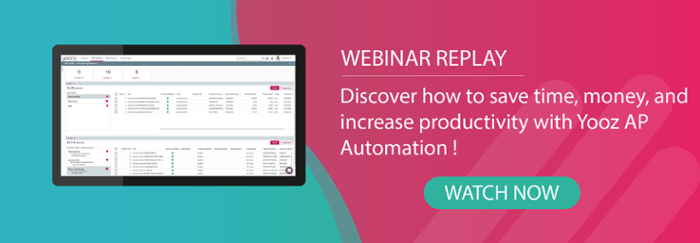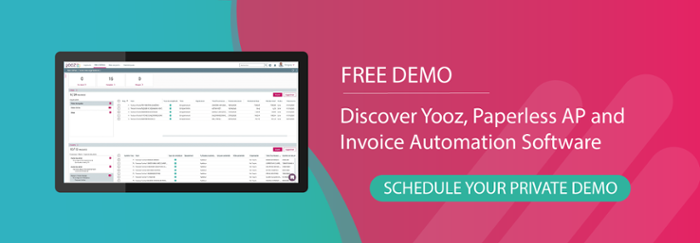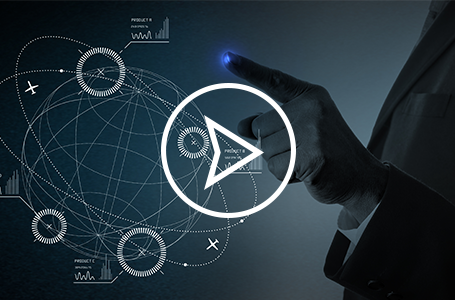Research, purchase, receive, pay. Doing business the seamless, digital way with as little friction and delays as possible is a wonderful concept that improves visibility, saves time and money for all involved. And it can be accomplished, regardless of the industry you’re in and the size of your organization. Even a small to midsize business can afford today’s technology tools to modernize most if not all its business processes, from purchase to payment. The key driver for this procure-to-pay (or P2P) workflow is accounts payable automation.
AP automation is about much more than just capturing incoming invoices and making sure they are approved and paid on time. Instead, it touches on and connects to almost everything a business does both in and out of the procurement process, from finding and negotiating with vendors to maintaining adequate inventory, reducing fraud and waste, and creating a steadily growing body of financial intelligence that controls visibility and helps the entire company optimize its cash management and stay competitive.
A Virtual Cycle: How the P2P Automation Process Works
Done right, AP automation is a virtuous cycle where each order placed and each invoice received creates and provides more actionable information and insight and boosts productivity. Every bit of extracted data helps train the platform to become smarter and more efficient.
While an increasing number of companies have come to rely on automation tools, too many still don’t have an end-to-end software solution that handles all aspects of invoice and spending from the moment a PO is issued to the last step when payment is initiated.
That’s a surprising implementation gap, considering that powerful, cloud-based platforms such as Yooz keep getting more powerful with each version, most recently with Yooz Rising. Not only do these platforms make state-of-the-art automation affordable for any business, they also take the risks and guesswork out of AP automation because they are highly accurate and integrate well with existing financial systems. Here’s how market researcher Levvel describes the landscape in their “AP ePayables Pulse Check in 2022”
“The core features of an AP automation solution have been firmly established since the tools gained mainstream adoption. But as adoption continues to increase, it’s likely that the capabilities of software will expand. Purchase-to-Pay and Source-to-Settle solutions have existed for some time now, but they are mainly utilized by enterprise-sized organizations (organizations with above B in annual revenue), leaving SMEs (less than 0M in annual revenue) and mid-markets (0M-B in annual revenue) to either maintain manual structures for some processes or use individual best-of-breed tools to manage each step along the way.”
Automation Affects Your Entire Range of Business Processes
Let’s break down the benefits of P2P automation (source-to-settle covers almost the same range of activities). By P2P, experts usually refer to the whole process from point of order to payment, including sourcing, requisitioning, and purchasing from a vendor, receiving, paying for, and accounting for those goods and services.
Making this workflow as paperless, touch-free, and digital as possible can unlock tangible benefits for every company. Intelligent AP automation will liberate an organization from a slew of old-fashioned steps: shuffling paper, manual entry, purchasing, physical routing for approvals, cutting and mailing checks, sending requests, and reconciling AP transactions with an ERP system.
Yooz can handle all that. It’s up and running in an hour and will immediately correctly read and understand 8 out of 10 incoming invoices. Routing them to the right people for approval and flagging suspicious documents for further review means dramatically shorter cycle times and more opportunities to cash in on early-pay discounts.
Successful, complete purchase to pay automation provides a business advantage that impacts your bottom line in several ways:
- It cuts the cost to handle an invoice by 80 percent.
- It shortens cycle times from weeks to days or even a few hours.
- It frees the procurement department from handling supplier inquiries and lets them focus on real value-add tasks.
- It strengthens the relationship with your vendors as they can always be in the loop.
- It makes your business more resilient since every team member can do their job remotely, even from a mobile device.
- It gets your organization ready for digital transformation across the board.
Futureproof Your Company by Automating Back Office Processes
That last point is particularly important because it upgrades a basic back-office function such as accounts payable and turns it into a strategic asset and change leader. When your AP team logs onto Yooz, it suddenly is wielding a powerful set of cutting-edge tools. Yooz has taken the best practices from two decades of AP automation and supercharged it with the latest in robotic process automation (RPA) and deep learning algorithms.
A growing army of RPA “bots” is busy disrupting almost every industry by freeing humans from tedious tasks such as scheduling meetings, answering simple customer queries or approving expense reports. But that’s no reason to worry about being replaced at work by bots; there will still be a need for human involvement. That kind of software will for quite some time lack the interpersonal skills or the human touch, as New York Times tech reporter Kevin Roose points out in his book "Futureproof: 9 Rules for Humans in the Age of Automation."
The traditional, manual-task based procurement process, even traditional procurement software, is no longer enough. Complete purchase-to-pay process automation is the true future of procurement. Not only will it enhance a company's ability to stay competitive by boosting the bottom line, it's also a highly effective way to prepare your team for the coming wave of digital transformation.







